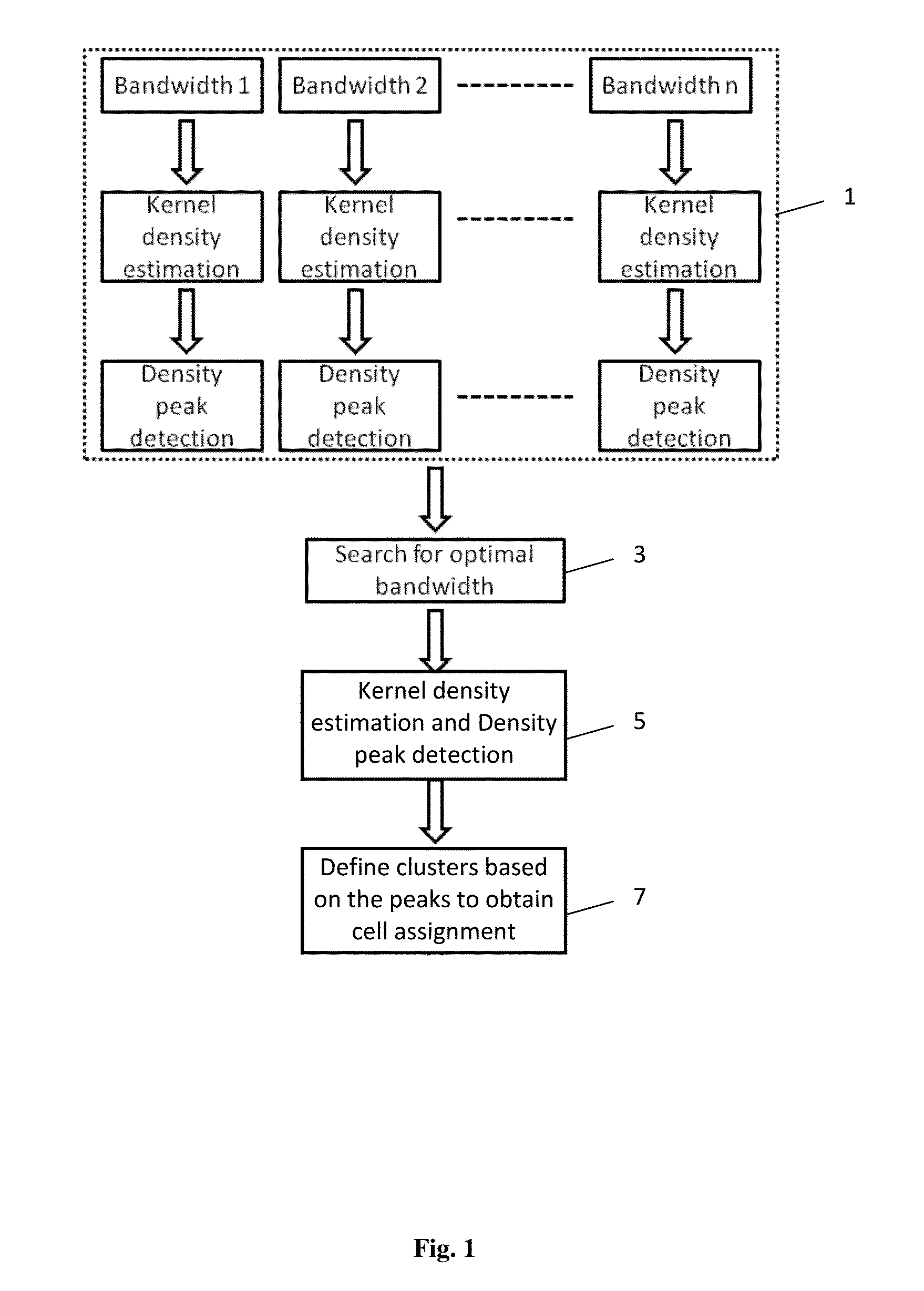Method and system for automatically assigning class labels to objects
- Summary
- Abstract
- Description
- Claims
- Application Information
AI Technical Summary
Benefits of technology
Problems solved by technology
Method used
Image
Examples
Embodiment Construction
[0038]FIG. 2 shows an exemplary integrated data analysis pipeline for flow cytometry and mass cytometry data, which is termed Next Generation Single-Cell Analytical Tools 100 (NGSCAT). The NGSCAT 100 may be implemented by a computer system having a processor and / or hardware components configured to perform one or more of: pre-processing 10, dimensionality reduction 20, class assignment 30, cluster annotation 40, comparative analysis 50, visualization of subset progression 60 and post-processing 70. The computer system typically comprises a data storage device storing program instructions, the program instructions being operative upon being run by the processor to cause the processor to perform any one or more of the above operations, for example, the system has a class assignment component which performs class assignment operation 30 (and its sub-operations 302-318 as will be described below). For purposes of clarity the operations are enumerated. However, it will be understood by a...
PUM
 Login to View More
Login to View More Abstract
Description
Claims
Application Information
 Login to View More
Login to View More - R&D
- Intellectual Property
- Life Sciences
- Materials
- Tech Scout
- Unparalleled Data Quality
- Higher Quality Content
- 60% Fewer Hallucinations
Browse by: Latest US Patents, China's latest patents, Technical Efficacy Thesaurus, Application Domain, Technology Topic, Popular Technical Reports.
© 2025 PatSnap. All rights reserved.Legal|Privacy policy|Modern Slavery Act Transparency Statement|Sitemap|About US| Contact US: help@patsnap.com



